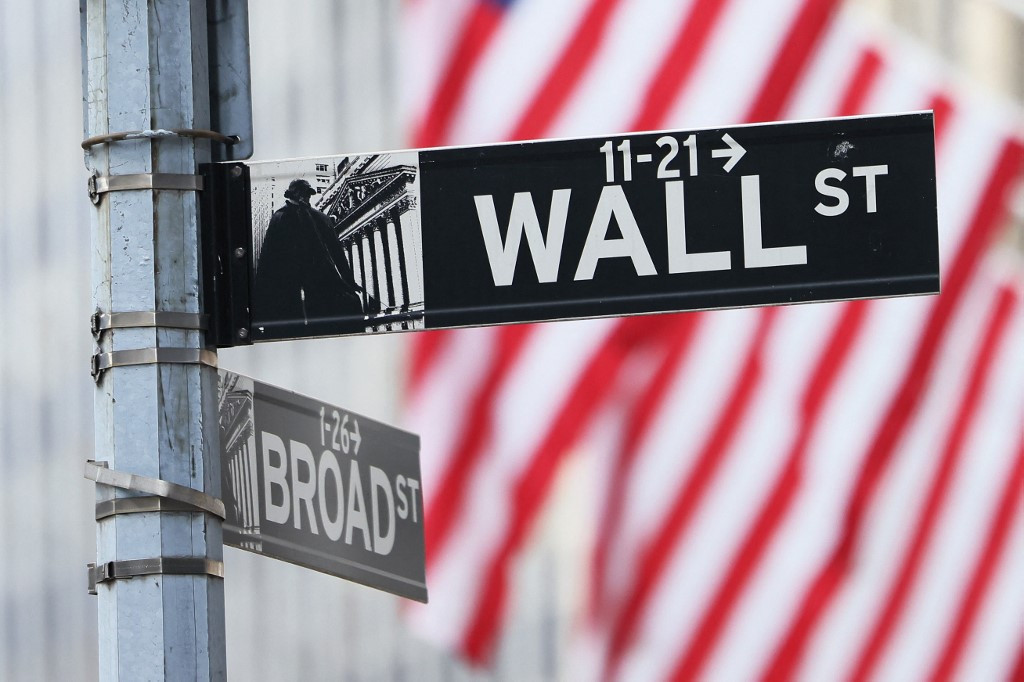Popular Reads
Top Results
Can't find what you're looking for?
View all search resultsPopular Reads
Top Results
Can't find what you're looking for?
View all search resultsMarket panic deepens as world scrambles to temper Trump tariffs
Futures markets moved swiftly to price in almost five quarter-point cuts in US rates this year, pulling Treasury yields down sharply and hampering the dollar.
Change text size
Gift Premium Articles
to Anyone
M
ajor stock indexes plunged in Asia on Monday as White House officials showed no sign of backing away from their sweeping tariff plans, and investors wagered the mounting risk of recession could see US interest rates cut as early as May.
Futures markets moved swiftly to price in almost five quarter-point cuts in US rates this year, pulling Treasury yields down sharply and hampering the dollar.
The carnage came as President Donald Trump told reporters that investors would have to take their medicine and he would not do a deal with China until the US trade deficit was sorted out. Beijing declared the markets had spoken on their retaliation plans.
"The only real circuit breaker is President Trump's iPhone and he is showing little sign that the market selloff is bothering him enough to reconsider a policy stance he has believed in for decades," said Sean Callow, a senior FX analyst at ITC Markets in Sydney.
Trump denied Sunday he was intentionally engineering a selloff and insisted he could not foresee market reactions, saying he would not make a deal with other countries unless trade deficits were solved.
"Sometimes you have to take medicine to fix something," he said of the market pain that has seen trillions of dollars wiped off the value of US companies since the beginning of his tariff rampage.
Speaking to reporters aboard Air Force One, he added that he had sought to resolve the issue with world leaders over the weekend, claiming "they're dying to make a deal."
Investors had thought the loss of trillions of dollars in wealth and the likely body blow to the economy would make Trump reconsider his plans.
"The size and disruptive impact of US trade policies, if sustained, would be sufficient to tip a still healthy US and global expansion into recession," said Bruce Kasman, head of economics at JPMorgan, putting the risk of a downturn at 60 percent.
"We continue to expect a first Fed easing in June," he added. "However, we now think the Committee cuts at every meeting through January, bringing the top of the funds rate target range down to 3.0 percent."
S&P 500 futures slid 3.1 percent in volatile trade, while Nasdaq futures dived 4.0 percent, adding to last week's almost $6 trillion in market losses.
The pain likewise engulfed Europe, with EUROSTOXX 50 futures down 3.0 percent, while FTSE futures lost 2.7 percent and DAX futures 3.5 percent.
Japan's Nikkei sank 6 percent to hit lows last seen in late 2023, while South Korea dropped 5 percent. MSCI's broadest index of Asia-Pacific shares outside Japan fell 3.6 percent.
Chinese blue chips lost 4.4 percent, as markets waited to see if Beijing would respond with more stimulus. Taiwan's main index, which had been shut on Thursday and Friday, tumbled nearly 10 percent, leading policymakers to curb short selling.
The gloomier outlook for global growth kept oil prices under heavy pressure, following steep losses last week. O/R
Brent fell $1.35 to $64.23 a barrel, while US crude dived $1.395 to $60.60 per barrel.











